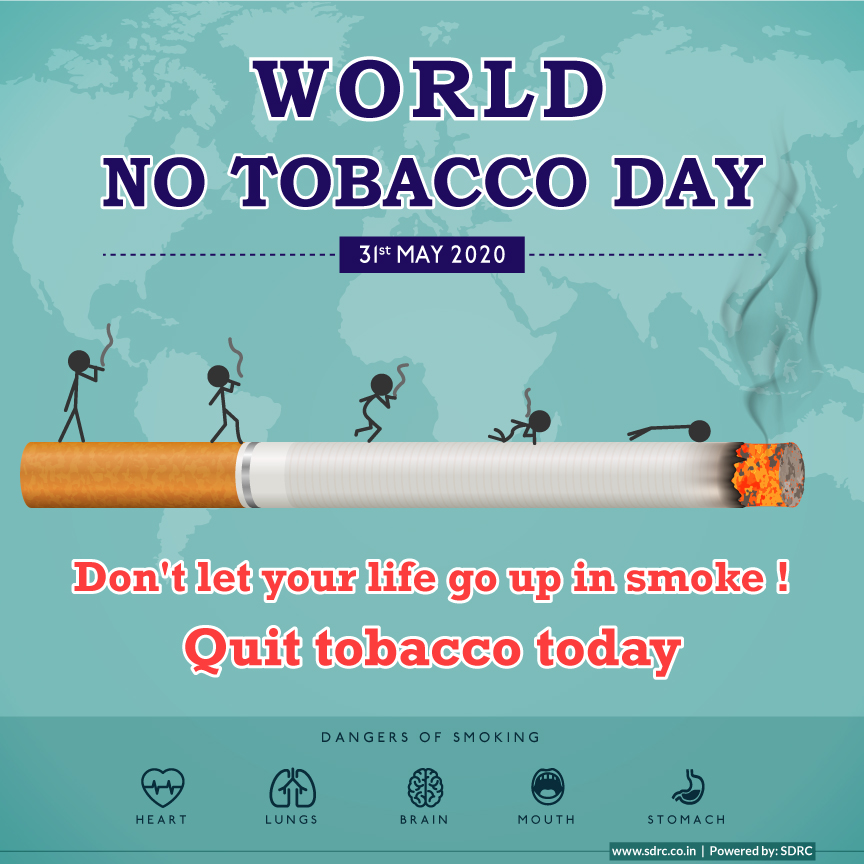Today as the world grapples with COVID-19, smoking is the worst thing one can do to one’s body. It impairs lung function, reduces body’s immunity, and makes it difficult to fight off the virus.
On May 11, the World Health Organization (WHO) released a statement indicating smokers are more likely to develop severe disease with COVID-19, compared to non-smokers. Apart from it many studies have found the same.
As per a new study conducted by scientists at the Indian Institute of Technology (IIT) Jodhpur, smoking can increase the chance of contracting COVID-19 infections.
The study found that smokers are likely to contract the novel coronavirus-based neurological infections due to the functional interactions between human receptor and nicotinic receptor.
UC San Francisco researchers found that smokers have almost double the chance of serious complications once they get infected with the virus, compared with non-smokers. They conducted 19 independent studies taking 11,590 COVID-19 patients as subjects.
Why is Tobacco equally dangerous as COVID-19?
COVID-19 has already claimed more than 369,000 lives all over the world (as of May 31, 2020). According to the WHO, tobacco-related illnesses cause more than eight million deaths every year globally, and more than one million in India. Many among them are non-smokers affected by second-hand smoke.
What is World No Tobacco Day?
World No Tobacco Day is one of eight official global public health campaigns observed on May 31 every year. The annual observance day informs the public about the hazards of using tobacco and what the WHO is doing to fight the epidemic. It spreads global awareness on quitting tobacco and living a healthy life.
Every year, the WHO chooses a theme to create a strong message for the day. The theme becomes the main component of the WHO’s tobacco-related agenda for the next year.
The theme of World No Tobacco Day 2020 is ‘Protecting youth from industry manipulation and preventing them from tobacco and nicotine use.’
Snippets about World No Tobacco Day
In 2019, the theme selected was ‘Make Every Day World No Tobacco Day’
In 2018 the theme was ‘Tobacco Breaks Hearts: Choose health, not tobacco’ #NoTobacco
In 2017 the theme chosen was ‘A threat to development’
How to Quit Tobacco Products?
WHO recommends immediate action by smokers to quit tobacco using proven methods such as nicotine replacement therapies, mobile text-messaging programmes, and toll-free quit lines such as 1800-11-2356.
Nicotine replacement therapies, such as gum and patches are designed to help smokers quit tobacco.
Breathing exercises and meditation reduce the cravings to a large extent and keeps the mind relaxed and focused.
Change in diet to more fruits and fresh vegetables also reduces the urge to smoke or consume tobacco products.
Running, jogging, and other cardio exercises improves lung health and the gradual improvement in fitness levels can act as an incentive to give up tobacco.
Within 20 minutes of quitting, blood pressure and heart rate drop. After 12 hours, carbon monoxide level in the bloodstream becomes normal. Within two-12 weeks, blood circulation increases, and lung function improves. After one to nine months, coughing and shortness of breath decrease.




